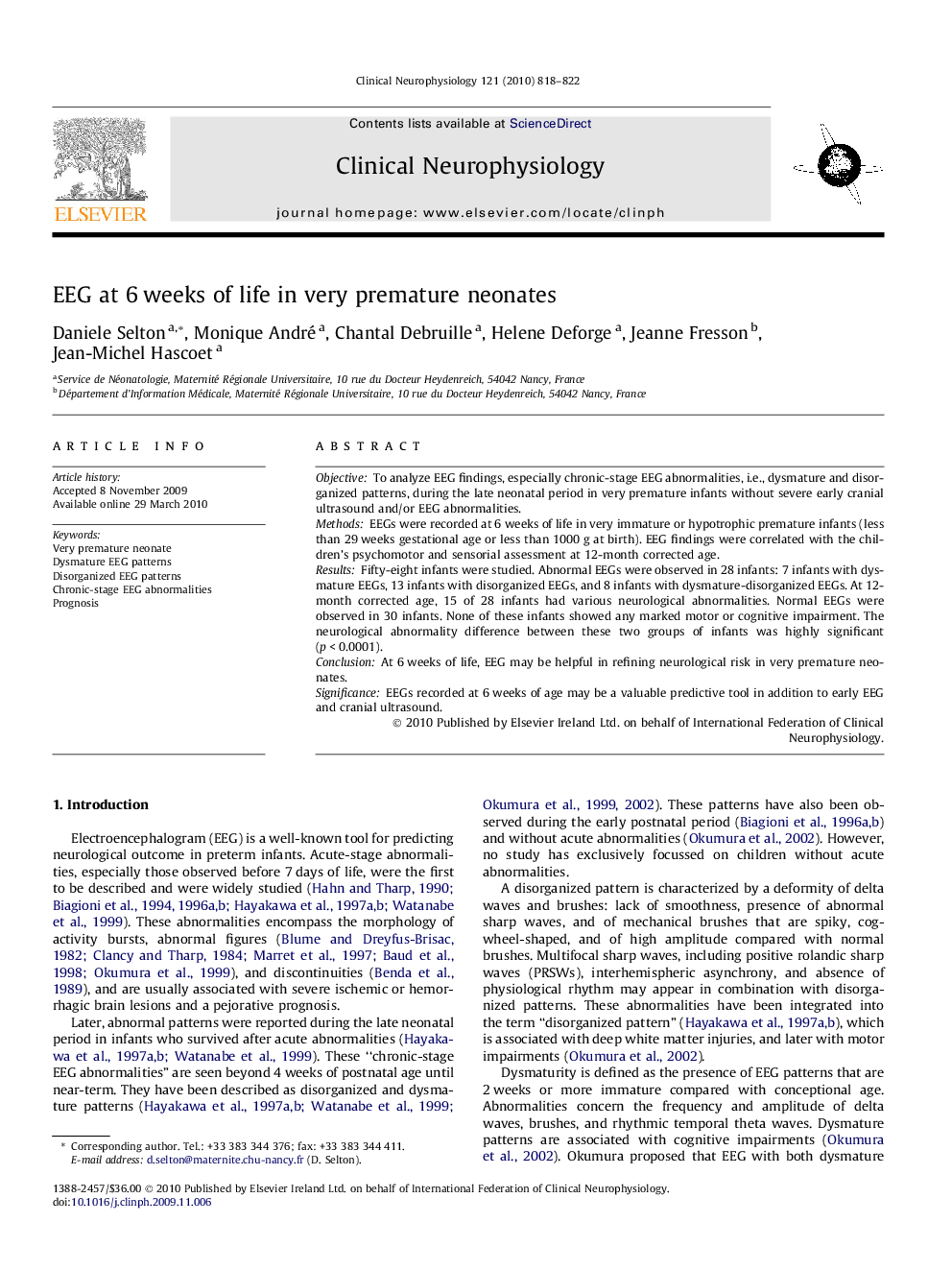| کد مقاله | کد نشریه | سال انتشار | مقاله انگلیسی | نسخه تمام متن |
|---|---|---|---|---|
| 3045674 | 1185027 | 2010 | 5 صفحه PDF | دانلود رایگان |

ObjectiveTo analyze EEG findings, especially chronic-stage EEG abnormalities, i.e., dysmature and disorganized patterns, during the late neonatal period in very premature infants without severe early cranial ultrasound and/or EEG abnormalities.MethodsEEGs were recorded at 6 weeks of life in very immature or hypotrophic premature infants (less than 29 weeks gestational age or less than 1000 g at birth). EEG findings were correlated with the children’s psychomotor and sensorial assessment at 12-month corrected age.ResultsFifty-eight infants were studied. Abnormal EEGs were observed in 28 infants: 7 infants with dysmature EEGs, 13 infants with disorganized EEGs, and 8 infants with dysmature-disorganized EEGs. At 12-month corrected age, 15 of 28 infants had various neurological abnormalities. Normal EEGs were observed in 30 infants. None of these infants showed any marked motor or cognitive impairment. The neurological abnormality difference between these two groups of infants was highly significant (p < 0.0001).ConclusionAt 6 weeks of life, EEG may be helpful in refining neurological risk in very premature neonates.SignificanceEEGs recorded at 6 weeks of age may be a valuable predictive tool in addition to early EEG and cranial ultrasound.
Journal: Clinical Neurophysiology - Volume 121, Issue 6, June 2010, Pages 818–822